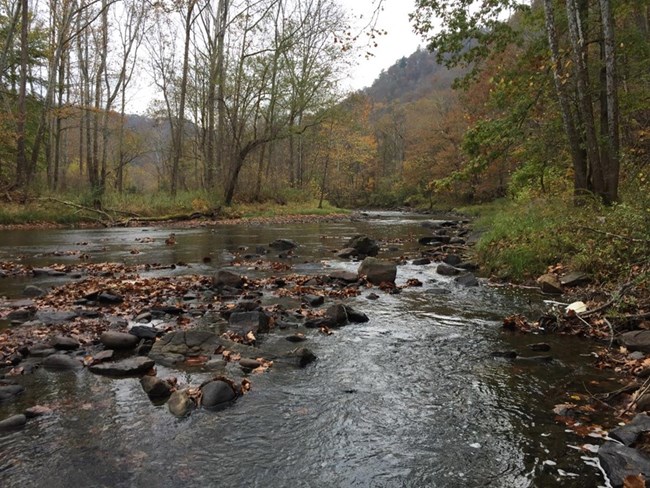Learn about NRCAs
The Natural Resource Condition Assessment (NRCA) Program provides framework, funding, and publishing support to parks to aid in the synthesis and documentation of natural resource conditions. Condition assessment reports are a tool to describe selected park resources, and record a snapshot of their current condition, identify trends, and identify potential or current threats and stressors. Understanding the condition and trend of natural resources is key for parks and NPS planners to appropriately prioritize and allocate stewardship resources.

Photo by Andy Nadeau, SMUMN GSS.
Traditional NRCA Report: 2018
In an effort to better understand and manage the natural resources of the river, a Natural Resource Condition Assessment was completed, and published in 2018. Staff from the National Park Service (NPS) and Saint Mary’s University of Minnesota (SMUMN) worked together to identify the natural resources and stressors to include in this condition assessment. The final report includes ten resource topics:
- Upland forest communities |
||
- Riparian vegetation communities |
||
- Birds |
||
- Mammals |
||
- Hepetofauna |
||
- Aquatic wildlife community |
||
- Water quality |
||
- Air Quality |
||
- Dark night skies |
||
- Surface water hydrology |
Six of the ten components assessed were considered to be in good condition or of moderate concern. However, air quality and riparian vegetation communities were determined to be of significant concern, and condition could not be determined for herpetofauna and aquatic wildlife communities. Park-wide threats and stressors include climate change, exotic species, habitat fragmentation, and water quality degradation. Understanding these threats and how they relate to the condition of park resources, along with continued monitoring, can help the NPS prioritize management objectives and better focus their efforts to maintain the health and integrity of the park ecosystem.
For other reports and natural resource datasets visit the NPS Data Store.
Source: NPS DataStore Collection 7765 (results presented are a subset). To search for additional information, visit the NPS DataStore.
Last updated: February 25, 2022
